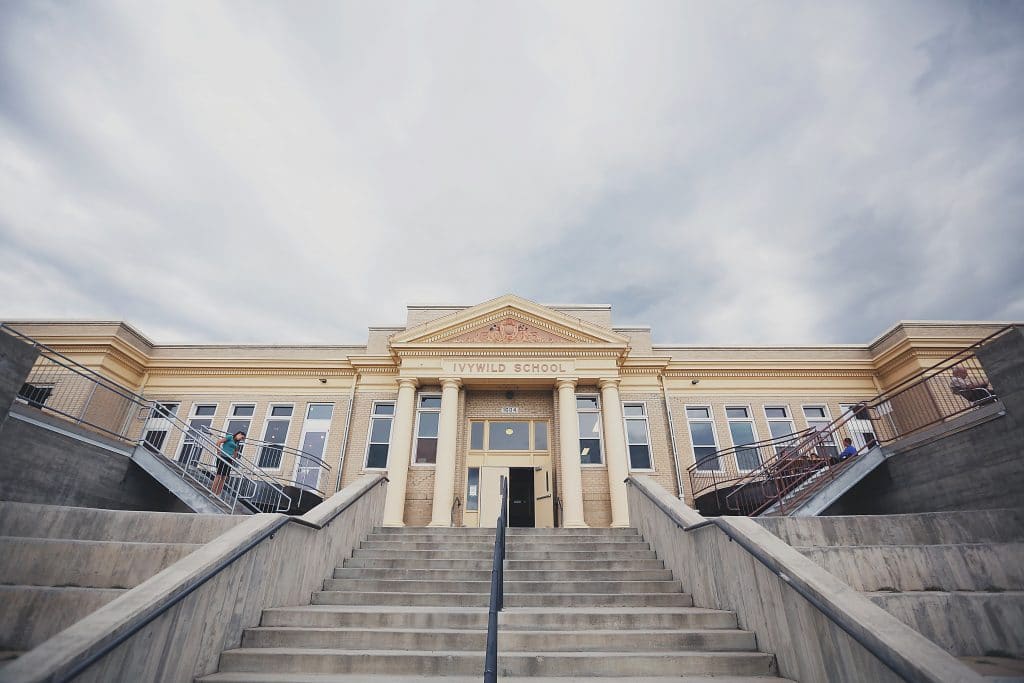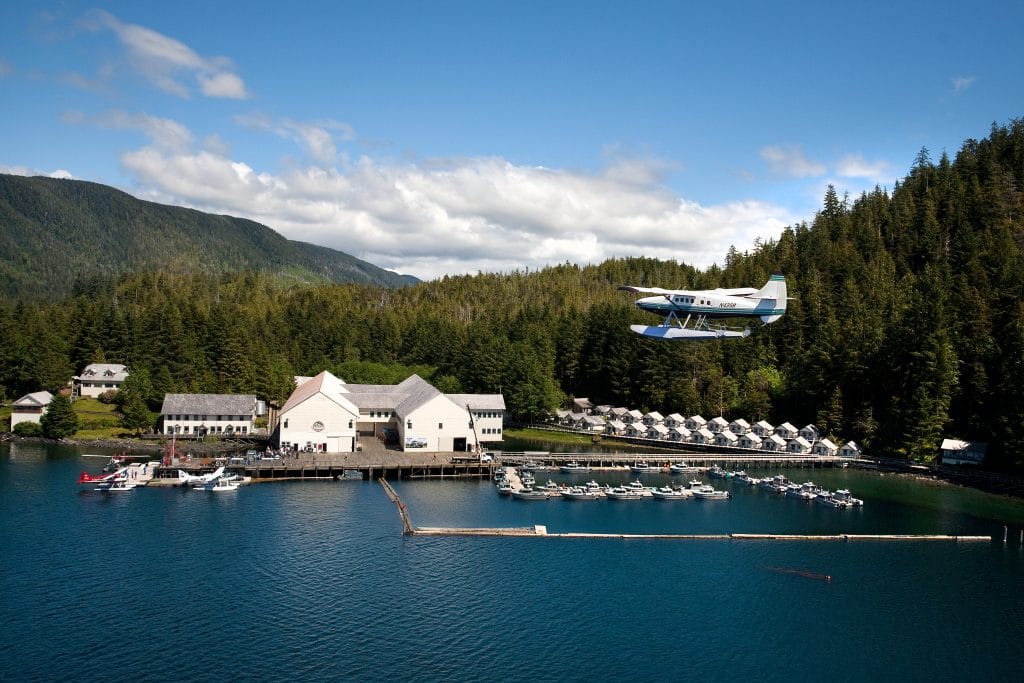If you want to spend more time in charming historical buildings, consider staying in one of these unique accommodations or visiting some of America’s most interesting art galleries, community spaces and museums. All of them honor their historic roots while breathing new life into places that could have been destroyed.
Art Studios/ Performance Spaces/ Museums:

1.Meat Packing Plant Turned Leather & Antiques Shop (Nashville, Tennessee)
A 1906 industrial boiler room overlooking the Cumberland River in the Germantown district of Nashville, Tennessee lay abandoned for over thirty years before Peter Nappi Studio decided to use it for their flagship store. Less than a mile from downtown, this room was part of a 1600-acre compound originally built as a meat packing plant.
Peter Nappi Studio renovated the place into a space that has become a destination in itself, drawing international visitors as often as locals for everything from small, impromptu evenings with legendary musicians to full-scale events for Rolling Stone — and, of course, shopping! It houses the full line of Peter Nappi original leather goods as well as a selection of vintage European furniture, a stage, and an antique bar. Visitors often report feeling as if they’ve stepped into a store straight from the streets of Italy and can relax and sip an espresso, cappuccino, or glass of wine while they shop.

2. Old Meets New Performance Space (Chicago, Illinois)
Located in Chicago’s Pilsen neighborhood, you can find Thalia Hall, a historic property that has recently been restored to its original nineteenth century glory, boasting a unique performance space, restaurant and bar. At the turn of the century, Pilsen was a Czech community, with Thalia Hall built in 1892 and modeled after Prague’s ornate Opera House. The venue served as a multipurpose property, offering commercial storefronts, residential housing and a performance hall until it was vacated in the 1960s. Thalia Hall remained virtually untouched until the end of 2013 when new owners updated the building, keeping its authentic charm intact. You can still find tooled-tin crown molding, original stone arches and door hinges from its ground floor’s time as a carriage house.
The Thalia Hall performance space provides a new definition of “dinner and a show.” You can find both indie and well-known acts, as well as an onsite restaurant with beer-focused food, every menu item designed to pair with rotating draught beers. Punch House, the basement bar, serves inventive punch cocktails in a retro atmosphere reminiscent of a 1960s rumpus room.

3. Correctional Facility Gone Creative (Fairfax, Virginia)
About a hundred years ago, Fairfax, Virginia was home to a correctional facility for Washington, D.C.’s non-violent criminals. Most of the inmates were from the National Women’s Party, who were arrested for picketing in front of the White House for women’s voting rights. The prison had been commissioned by President Teddy Roosevelt, who saw the facility as a way to provide structured work as the basis for the prisoners’ rehabilitation.
Today, the Workhouse Arts Center inhabits the space and houses over 100 working artists. Visitors can tour the grounds, learn about the history of the complex, visit the artists’ studios, participate in art classes and workshops, attend musical and theatre performances and visit a two-story gallery exhibiting local, regional and international artists. There’s also small museum on its property where you can learn about its history as a former prison, with former correctional officers acting as docents.

4.The State Museum That Was Once A Cotton Mill (Columbia, South Carolina)
The largest and most comprehensive museum in South Carolina first started as a cotton mill in 1894. Listed on the National Register of Historic Places, it was the first fully electric powered mill in the world and a leading manufacturer of US cotton products. After almost 100 years in operation, it closed its doors and donated the building to the state. This space was converted to the South Carolina State Museum in 1988, although recently reinvigorated with the 2014 “Windows to New Worlds” expansion. This renovation brought the mill back to life after decades of being covered up by dry wall, carpet and other materials. Now, original architectural features and character elements that made the Columbia Mills Building a true historic landmark are exposed for visitors to see.

5. Former Tractor Factory Reinvented Through Art (Fargo, North Dakota)
As one of the top agricultural states in the nation, it’s not surprising that Fargo would be the home to an International Harvester tractor factory. What is more surprising is it’s recent transportation into an art museum, studio and meeting space. First built in 1904, it was renovated 90 years later to take advantage of the large windows and skylights that allow natural light to illuminate the enormous building. Now, the Plains Art Museum includes Hannaher’s, Inc. Print Studio, The Dawson Studio, Café Muse, The Store, the Goldberg Art Lounge, meeting and reception space, frame shop, wood shop, visitor services center, performance areas and permanent collection storage and care areas. The space is connected by a sky bridge to the Katherine Kilbourne Burgum Center for Creativity, named after a pioneering art advocate in the region. Click here for more information.
Community Spaces:

6. Elementary School Transforms For The Community (Colorado Springs, Colorado)
Originally an elementary school built in 1916, the Ivywild School was closed in 2009. A few years later, neighbors and community leaders decided to turn this space into a multi-use district centered around the idea of linking commerce and community. Shortly thereafter, they decided to move the 18-year old Bristol Brewery over to the space along with a bakery, espresso/cocktail bar, delicatessen and office space. Now open, the bakery reuses yeast from the brewed beer. Community gardens on the property supply restaurants and others with freshly grown ingredients.
Hotels:

7. Caboose Turned Motel (Finger Lakes, New York)
Many of you have probably napped on a train, but have you ever slept in a caboose? Travelers and train fans alike can enjoy the experience of sleeping on the railroad at the Caboose Motel in the Finger Lakes. Spend an unforgettable night at the only motel in New York State to offer caboose accommodations. Guests can choose between five converted 1916 N5 cabooses located along “Caboose Alley” on tracks originally laid in 1896. Each caboose consists of a family-sized room, with accommodations for up to five people. Along with offering standard amenities, each maintains its original structure and even comes equipped with volume-controlled speaker so you can fall asleep to sound of a train in motion. The cabooses are available for rental April through October.

8. From Brewery Warhouse To Beer Hotel (Portsmouth, New Hampshire)
Ale House Inn honors its past as a former brewery warehouse, circa 1880. Thousands of kegs once rested here as they underwent fermentation and you can still notice the foot-thick brick walls designed to keep the beer at the same temperature 365 days a year. Like many breweries, the company ceased operations in 1917 with the ratification of Prohibition. The boutique hotel that moved into the space has kept much of its brick-walled charm as part of the inn’s aesthetic and continues to capitalize on its history with beer. It’s the perfect place to relax and drink a Portsmouth Brewing Company ale in the central Market Square.

9. Keeping Accommodation History Alive (Portland, Oregon)
Sentinel is one of Portland’s most storied hotels, situated within two historic downtown buildings – the former Seward Hotel and Elks Lodge — built in 1909 and 1923 respectively. These were joined in 1992 and the space opened as a 100-room boutique hotel in 2014. Moreover, an art collection includes larger-than-life photos and original prints highlighting those who changed the world with their contributions to civil rights, fashion, sports, music and innovation.
While you’re here, be sure to check out Jackknife, the onsite bar. It winds through a variety of distinct architectural spaces that have been stripped down and completely renovated with reclaimed wood and handcrafted details, ending in a speakeasy-style niche created in the former alley. You can find antique elements such as wrought iron gates that once served as the elevator entryway for the property, vintage lighting from Portland-based Rejuvenation Classic American Lighting, a gently curving 65-footwhite Carrera marble bar and an ornate vintage stained glass ceiling. The reclaimed space, never before accessible to the public, is now outfitted with cozy banquette seating with views into the bar and hotel lobby.

10. The Country’s Most Hospitable Train Station (Indianapolis, Indiana)
When booking Crowne Plaza Indianapolis-Dwtn-Union Stn, most visitors probably aren’t aware of its unique story. Formerly the world’s first-ever Union Station, you can still find “Ghost People” in the hallways as a relic from this era. Look for white statues of conductors, a family, a woman with her dog and more. The Grand Hall displays original stained glass — now a popular spot for weddings — while 18 original Pullman train cars are still on their original tracks. Today, visitors can rent out these train car rooms, while have trains running over top of them helping to simulate a moving train experience in an antique fashion. Fun fact: Inventor Thomas Edison once worked as a telegraph operator for the station.

11. A Rich Sea History Remains (Ketchikan, Alaska)
Established in 1912, Waterfall Cannery was the largest, most efficient seafood cannery in Alaska. For generations, the location was a hot spot for some of the country’s best fishing. In 1982, the historic cannery began its transformation to become one of the finest remote sport fishing destinations in the world while preserving original buildings. For example, the white clapboard cabins that once housed workers now provide rustic and comfortable accommodations for guests. Waterfall Resort guests can fish in the same spots that once produced world record-breaking amounts of king salmon (Chinook) and silver salmon (Coho). Its legendary location combined with its all-inclusive four-star guest service, knowledgeable local guides, and tasty Alaskan seafood dining make it a truly memorable experience.

12. A Historic Stay With A Creative Twist (Cincinnati, Ohio)
21c Hotel has breathed new life into the 100-year-old Metropole Hotel building, a historic Cincinnati landmark. The restoration preserved many original features, including a sweeping staircase to the second floor ballroom and original mosaic tile floors in the restaurant and elevator lobby. The restored property now features 160 rooms and 8,000 square feet of exhibition space for art installations, rotating exhibitions and exciting cultural programs. The art is open to the public, free of charge, 24/7. While you’re here, be sure to visit the The Metropole Restaurant, named after the iconic hotel, which uses sustainable locally-sourced ingredients and fireplace cooking techniques on a custom-built, wood-burning hearth to create a memorable meal.
Check back on April 20th for our round-up of America’s best bars and restaurants in repurposed spaces.
By Katie Foote
Also Check Out:
The World’s 12 Best Homestay Experiences For Culturally-Curious Travelers
Sip & Snack: Exploring Moravian Cookie Culture & Local Wine Pairing In North Carolina
Journey Inward: The Best Silent Retreats Around The World
Katie Foote
Latest posts by Katie Foote (see all)
- 8 Outstanding Conservation Safaris Around The World - Apr 12, 2022
- These 10 Women Whiskey Distillers Will Make You Crave A Manhattan - Dec 12, 2018
- Ethical Travel: Should You Visit Thailand’s Long Neck Women Villages? - Dec 9, 2018
- 8 Pioneering Vegetarian Vacations Around The World - Aug 13, 2018
- A New Perspective: Can Travel Help Reverse Alzheimer’s? - Aug 5, 2018




